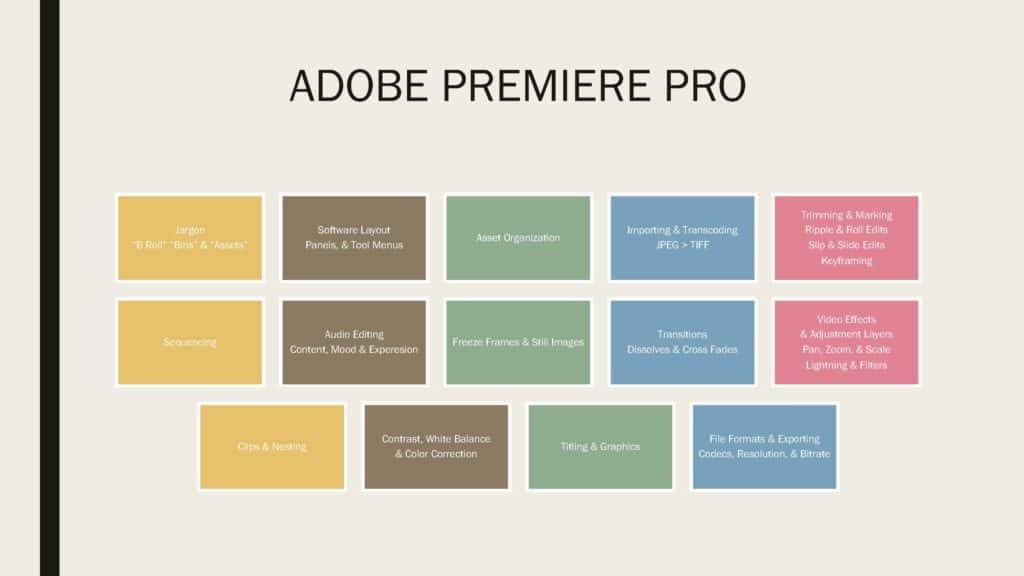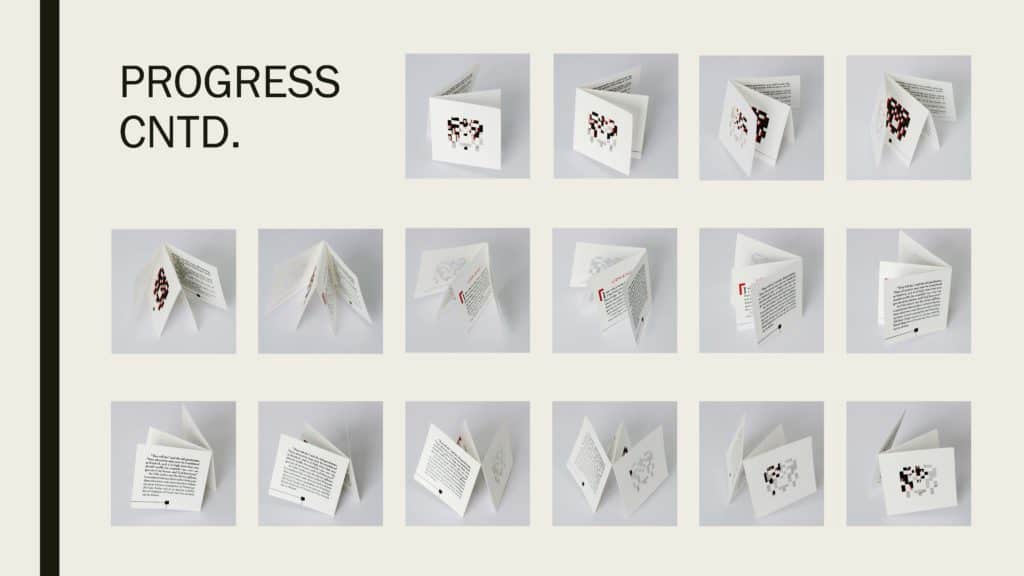Progress not perfection.” These three simple words of reassurance have been the mission statement of our cohort through the summer fellowship, and have become somewhat of a restorative, compulsory chant for me. Through the summer fellowship, I’ve used these words to settle feelings of fear, doubt, and insecurity—to generate new momentum after having been slowed by the challenges of learning.
And, that’s just what the DH Summer Fellowship has been for me, of course, challenges of learning—progress not perfection. What did I expect? The fellowship is not a talent show; it’s not a demonstration of knowing. The fellowship is a several weeklong class of your own design. And, like any class, you are—I was—provided mentors, facilities, and tools to help you learn—not know.
I began the fellowship with an overly ambitious plan to complete three videos exhibiting three different artists’ books from the University of Iowa Special Collections. Sounds simple enough, right? Well, fast-forwarding, I’ve finished the fellowship with several gigabytes of photographs and a single partial video of one artists’ book from my own collection—progress not perfection.
What happened then, between the goal and the outcome? Well, the project became much larger than anticipated. In reflecting, the first step I took during my fellowship was to really break down, itemize and organize all the steps necessary to complete a video. I had preproduction, production, postproduction, and distribution. In preproduction, alone, I had: equipment (hardware and software), scripts and storyboarding, staging and props, and test-shooting. You see where this is going? For equipment, I didn’t know what exact hardware I needed or what exact hardware was available through the Digital Studio. I knew I needed a camera and tripod, of course, but what camera? Mobile? DSLR? What lenses? As it would turn out, I would need a DSLR interchangeable lens camera as well as a macro lens for some of the more detailed sections of the artists’ book that I wanted to capture. I had no access to a macro lens through the studio, but I was able to acquire a DSLR camera, tripod, and portable lightbox. Step 1.1, then, was researching different photography equipment and setups to ascertain what was best and possible for my project. Step 1.2 became: to learn how to better operate a DSLR camera, etc.

The project’s steps really expanded, like branches from a tree. I mean, you wouldn’t think you need a separate step for learning how to use a portable lightbox, but I knew I was out of my depth when I couldn’t figure out how to refold and collapse it so that I could transport it to location! (It would turn out too that in reviewing how to fold the lightbox, I learned I was sitting the lightbox on the wrong side, so it sat with an undesirable droopy manner!) For the sake of brevity, I’ll spare you the details of my learning, just the introductory elements, of Adobe Premiere Pro video editing software, but it would be reasonable to estimate this portion as steps 10.1 through 10.87.

Joking aside, when I focused on learning and making progress—not knowing and making perfect—I learned a great amount (cameras, software, shooting, and editing) and had a great deal of fun overall in the DH Summer Fellowship program. My advice would be, more of a reminder really, to tune out the ego—yours and everyone else’s—because it’s just not helpful. In fact, it’s painful and exhausting really. (Always having to know; always comparing; always being on; always being put together.) And, unsurprisingly, the real learning—and fun—happens when you’re coming at your project from a place of humility. Lastly, not enough kind words could be said about the staff and faculty of the DH Summer Fellowship program. Special thanks to my mentor, Nicole J D White, and my instructor Stephanie Blalock.
Apply for the DH Summer Fellowship, the worst thing that can happen is that you learn something!
-Ryan Kangail
